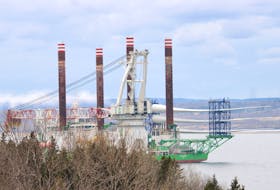Individuals are going to see some tough fees levied just for living in the province in hard times, in an attempt to pay down the provincial deficit, but looking specifically at business there will be even more added to the bill.
Business-Related Taxes
Harmonized Sales Tax (HST): On July 1, 2016, the HST will go up two per cent to 15 per cent.
Corporate Income Taxes: Retroactive to Jan. 1, 2016, the tax will increase by one per cent (moving from 14 per cent up to 15 per cent).
Gas Tax: On June 2, 2016, the existing gas tax will roughly double, increasing by 16.5 cents a litre. This is being considered a “temporary tax,” to be reviewed every six months, with that review considering oil prices. The diesel tax will go up by five cents a litre, aviation fuel tax will go from 0.7 cents a litre to 2.5 cents a litre. (Tax on heating fuel will not change.)
Retail Sales Tax: What’s old is new again, as this tax is re-introduced July 1, 2016. It is a 15 per cent tax applied to insurance premiums for property and casualty insurance policies.
Tobacco Tax: On April 15, there will be an increase of 20 cents per standard pack of cigarettes.
Financial Corporations Tax = On Jan. 1, 2016, the tax rate will increase one per cent (in addition to the one per cent Corporate Income Tax rate).
Insurance Companies Tax: On July 1, 2016, this existing tax will increase from four per cent to five per cent.
Business Fees
Added fees across the board are expected to provide a total $19.3 million a year. Within the mix are a series of fees specific to a variety of business in the province.
Theatre production: New third-party rental contracts are being negotiated for September, fees for everything from ushers to technicians will increase per hour, box office services and ticket printing will also be more expensive.
Pest control: A five-year commercial pesticide operator licence will go up from $500 to $750 as of June 1. Commercial pesticide vendors will similarly see increases ($250 to $375 per licence).
Iceberg water and beer: As of Oct. 1, there will be a $5,000 minimum annual charge for “water bottling and/or production of other water based finished products from water or ice harvested from icebergs.” Atop that, there will be a $1,000 charge for every 1,000 cubic metres of iceberg harvested and used. Licences required. Don’t worry, there will also be hikes to fees for bottling other water products.
Aquaculture and fish processing: Beginning immediately, there will be fees specific to finfish farming of $1,000 per site and $145 per hectare. Surcharges will be brought in of anywhere from $0.50 per tonne for pelagics and groundfish, to $5 per tonne for processing snow crab and $5.50 per tonne for clams. There will also be a water-use fee of $1,000 for marine aquaculture and $10,000 for freshwater aquaculture operations. An aquaculture lease or licence will cost more, moving from $4 per hectare raised to $8 per hectare as of May 1.
Real estate: A real estate agent’s licence will cost an extra $100 a year. A sales licence will also see a $100 hike.
Transport: Registration fees on commercial vehicles are going up 12.5 per cent. Commercial road test fees are going up $30. Trailer fees are also going up, by roughly $10. Inspection station certificates will cost an extra $50, moving up to $150 per.
Taxi services: Taxi registrations will go up $20 ($10 in online service).
Many fees will impact construction operations, from fees relating to heavy equipment to environmental assessments to water use. And this represents just a sampling of sectors affected.
The province has also cut $3.2 million from the operational grant of the Research and Development Corporation.








